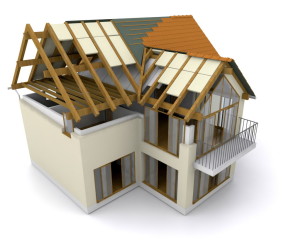 Home renovation projects had taken a beating during the recession. Spending money was challenging considering the restricted lending and credit practices. However, home values are now on the rise. The optimism has also fueled an increase in remodeling and refacing projects.
Home renovation projects had taken a beating during the recession. Spending money was challenging considering the restricted lending and credit practices. However, home values are now on the rise. The optimism has also fueled an increase in remodeling and refacing projects.
Why Renovation Loans Are Gaining Popularity Again
Remodeling in particular has shown a gradual upswing over the last four quarters. With rising home values, homeowners are keener to spend on comprehensive repairs and renovations. However, most of them don’t understand the utility of refinancing a loan.
Refinance Basics: Combining Home Improvement Costs
Re-novation loans in the form of FHA 203 (k) help you combine and divert home improvement costs in the form of a new, smaller loan. The loaned amount is calculated on the basis of the home’s current value and the estimated renovation costs. Lending institutions calculate a loan-to-value of the first mortgage, offering a home equity loan up to 80 percent – 90 percent. A renovation loan is the only sensible solution if you have 20% equity or lesser.
Qualifying for Renovation Loans
Here, refinancing doesn’t mean unwarranted risk exposure for the lender. Renovation loans are also affected by the borrower’s debt-to-income ratio and credit score. With a credit score of 640 or above, you can qualify for FHA loans. This loan is slightly simpler to qualify for but the higher insurance premium makes it less popular. The interest rates aren’t exorbitant, usually hovering from one-fourth to one-half percent higher than the usual loan rates.
Renovation Loan Options
FHA 203 (k) loans are perhaps the first choice for renovation loans. They are available in two options. With the first option, the loan can be extended to $35,000 in total re-novation costs. The second option is a standard loan that requires a minimum re-novation of $5,000 and is without an upper cap. Please note that structural repairs are allowed only in the standard option. Neither of these options covers for expenses on luxury items.
Renovation Loan Regulations
If you happen to qualify for a 203 (k) loan, an HUD consultant will evaluate your living space and contractor bids vying to complete the project. Further, there are some time limitations. This is to ensure that homeowners use the money for the intended purpose only. Owner-occupants don’t have to abide by a minimum spending limit to qualify for HomeStyle Renovation loans. The only condition being that the amount spent on repairing cannot be more than 75% of the home’s post-repair value. Further, limitations exist based on the area you inhabit.
More Renovation Loan Dynamics You Should Know
The first step should be to approximate the overall cost of the project. You can consult home decorators or professional remodelers. Getting bids from different contractors in your area is necessary. The need to apply for a slightly, greater-than-approximated loan is critical since the loan amount cannot be changed later. Try to visit different lending institutions to find out which is the best deal for you.
Some lenders are slow in releasing the funds while some choose to release it in smaller installments, i.e. in accordance with the progress of the renovation project. Usually, final payments are reserved for the period immediately following the final inspection. We advise you to search for lenders who understand the dynamics of this niche which is a bit different from a typical mortgage.
